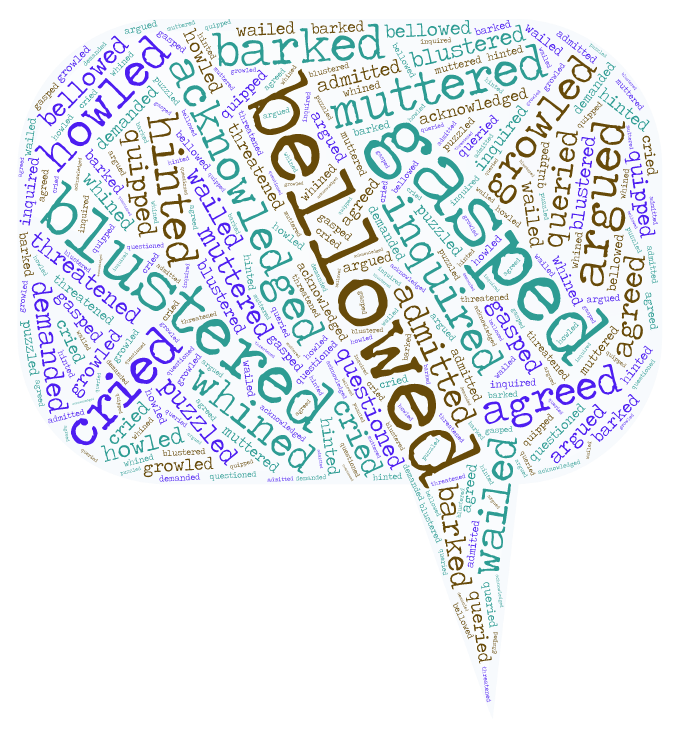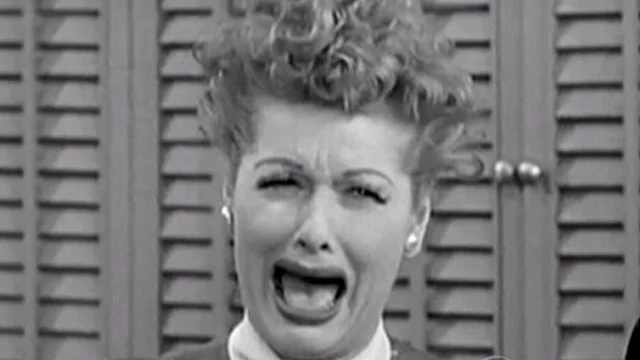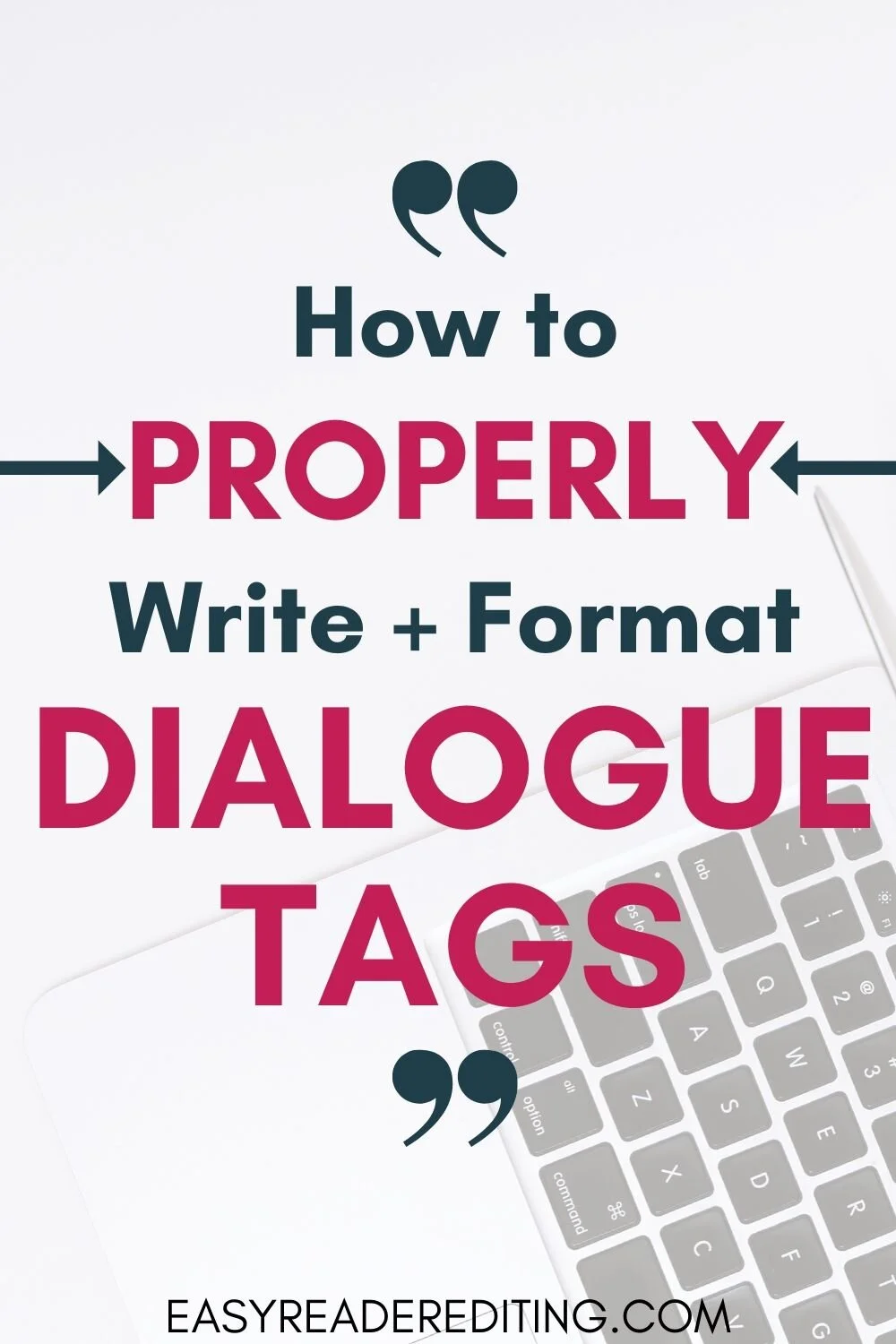Those !@#$%^&* Dialogue Tags
Which ones make YOU cringe?
Image credit: Easy Reader Editing via WordArt.com
Book after book has been written about dialogue tags.
Blog after blog has featured articles with cautionary tales. And yet . . . the overly awkward dialogue tag still manages to work its way out of the garbage can and into manuscripts the world over.
In fact, while researching for this post, I was astounded at the number of articles I found which advocated "the death of 'Said'" and "making your dialogue more interesting with anything but 'said'" and other (generally bad) advice.
I'm not saying there's never a good moment for a shout here and there, but the advice to young writers on various teaching blogs & forums goes directly against the advice of best-selling authors and their editors, who sometimes advise to skip tags altogether as often as possible, and more often suggest "said" or "asked" as a way of making the tag disappear.
Personally, I tend to skim over dialogue tags when I'm reading, so I like the idea of eliminating them more often than not, unless the conversation becomes confusing. Maybe it's because I read decent books that use "said" and "asked" and, as promised by those high-level authors, those two particular words become invisible after a little while.
No one wants to read the old-fashioned (and thankfully, almost never used) "he ejaculated" as a dialogue tag.
The more obscure tags will pull a reader from the story as physically as tipping them out of their chair. Think of how often you've read "blustered," "queried," "wailed," “retorted,” "bellowed," "quipped," and the like.
I don't know about you, but when I read those words, in my mind, the character is instantly replaced by the Skipper from Gilligan's Island, a blusterer & bellower from way back. Or suddenly the character is Lucille Ball, wailing her trademark waaahhh.
Image credit: ABC News Best in TV/Best in Comedy
Dialogue tags can wreck your pacing.
Elimination of dialogue tags in certain spots can be effective for quick back-and-forth action. I notice this most often when characters are thinking or arguing.
If a character is thinking, that can be shown easily through the use of italics, and the “I/she thought” becomes unnecessary. We think much more rapidly than we speak, so it naturally follows that our thoughts shouldn’t be slowed down by dialogue tags.
If your characters are arguing, a quick pace is often a given. Having “she shouted” and “he retorted” all over the place just clutters things up. The reader needs to feel the punch of brusque, forceful answers. We don’t need “he answered sharply” to follow a simple “FINE” as someone slams the door on their way out of a room.
But how can we tell who’s speaking if there’s no dialogue tag?
If your characters are written distinctly, their manner of speech should indicate easily enough who's talking. If he’s a simple village boy and she’s aristocracy, the words they use and the way their sentences are structured should be enough to tell the reader who’s speaking at that moment.
Sometimes, it’s a little more subtle—a point of view or an opinion can give the reader clues as to which person has spoken. An action, in the case of two same-gendered characters in a scene, can be a giveaway. There are ways to show these things that don’t always involve a tag.
There are some tags that just don’t work in the physical world.
This is usually a mistake made by inexperienced writers. People simply can’t blink, smile, or shrug their words. Those actions can certainly accompany whatever’s being said, but they can’t function as a dialogue tag.
“I don’t care,” he shrugged. [WRONG]
“I don’t care.” He shrugged—as if the choice between cake or pie didn’t have far-reaching, life-altering implications. [CORRECT]
“Smiling’s my favorite,” she grinned. [WRONG]
“Smiling’s my favorite.” She grinned, a blinding, all-teeth-on-deck kind of smile, as if to prove her point. [CORRECT]
And then there are the “sometimes okay” tags that should have limited use.
These are the tags that work once or twice, but become tiresome to read over and over. If you’re looking for a knuckle-rapping rule to follow here, you won’t find one, but you’ll know when you’ve hit your limit, and it usually doesn’t take long.
"I love you," she breathed. Although dictionary.com lists “breathed” as both “unvoiced/voiceless” and “utilizing the breath exclusively in the production of a speech sound,” Merriam-Webster only endorses the nonspeaking definition of it, or the more abstract (e.g. “don’t breathe a word of this to anyone”). Using “breathed” as a dialogue tag can give the impression of something spoken more intimately, more quietly than a whisper, but more often than not, the impact is greater if it’s used as a beat: “I love you.” She breathed the words more than whispered them, her lips so close to his ear that their warmth provided him with a pleasant—though involuntary—shiver.
"Don't do that," he growled. Try growling and saying anything intelligible. You're not Batman. I may or may not have a personal peeve with this one because of badly written romance and the overabundance of growling alpha males.
"Get over here, NOW," she hissed. Hissing and speaking don't usually mix, and though every parent has probably hissed out an urgent command to their child in a public place at least once, hissing sounds usually require the use of the letter "s" to have a more legit feel. Just ask Harry Potter.
"What do you mean, you won't?" he barked. I used to be firmly against this one. Unless it's a dog literally barking, and you understand that he sounds like arf arf woof woof grrr but you can translate it in your head like a foreign language, or—oh, forget it. But now I can tolerate it in small doses, if there’s a character who gives abrupt commands or shouts in single syllables (“Hey! You! Halt!”). But again, the trick is to use this and other words like it as sparingly as possible.
You don’t have to take my word for it.
Columnist Rob Hart wrote a terrific article years ago about expressive dialogue tags, calling them “the laugh tracks of the writing world.” I won’t spoil all of it for you, because you really should read the whole thing for yourself—it’s well worth three minutes of your time.
The gist of Hart’s thoughts on dialogue tags boils down to this: anything other than “said” and “asked” is telling, not showing, and it’s lazy writing. I know most writers don’t want to be called lazy, but allow me to put it a different way: when you use those kinds of dialogue tags, you’re limiting your own creativity, stopping yourself from exploring a richer description of what’s happening. You’re a stage director, telling an actor how to feel, rather than making them feel it through the action of the scene.
What’s the verdict on the so-called “death of said”?
In short, “said” is NOT dead, and anyone who tries to tell you it is has either never read a book that contained an overabundance of awkward dialogue tags, or they’ve never written a book that’s been professionally edited, or they’re in for a hard awakening if they’re aiming for bestseller status.
The ultimate goal is to make those dialogue tags disappear, whether literally or figuratively. You’ll never miss them, and neither will your readers.





